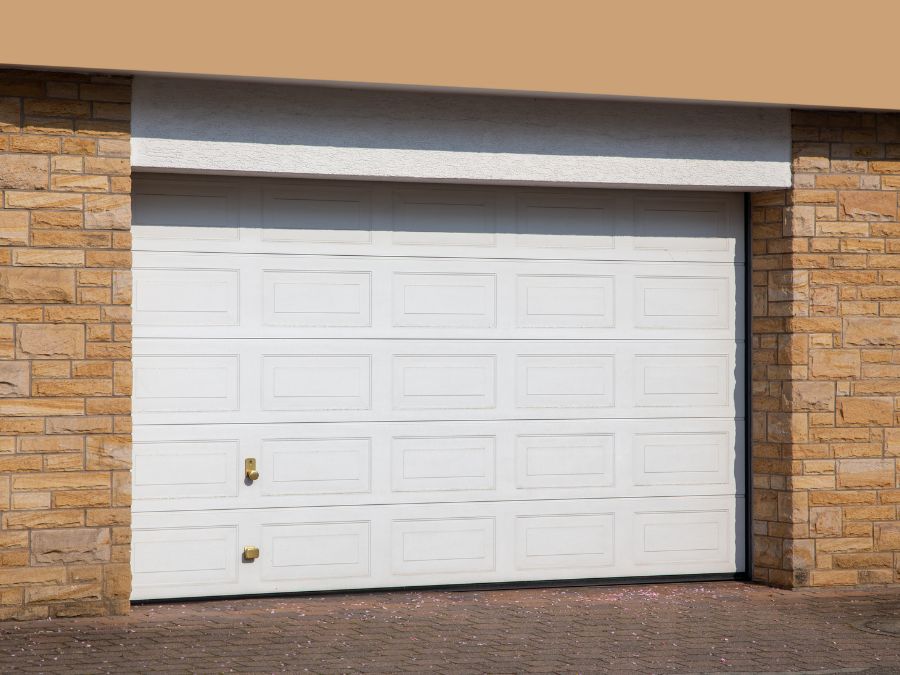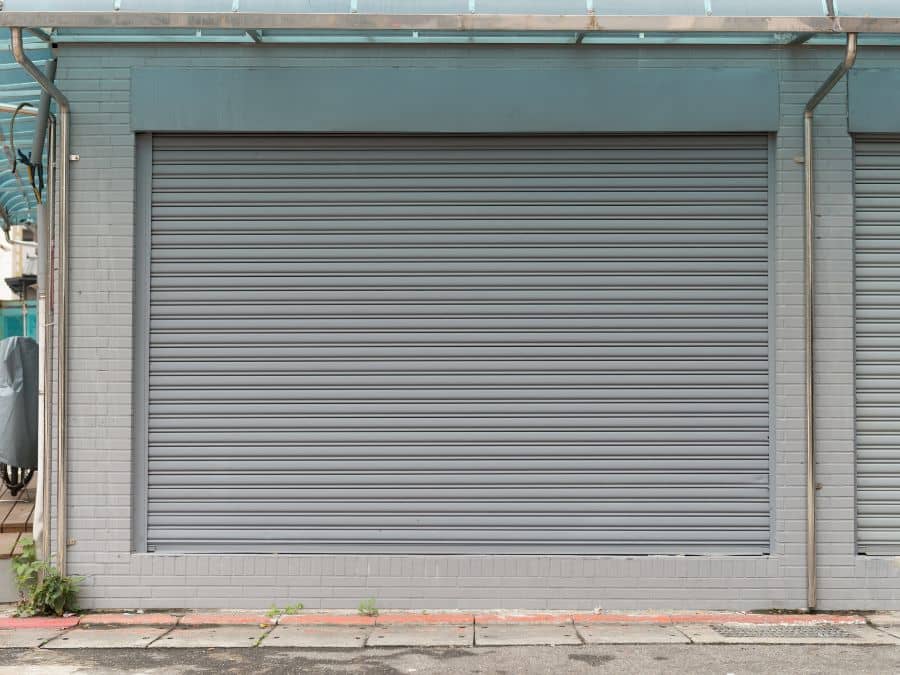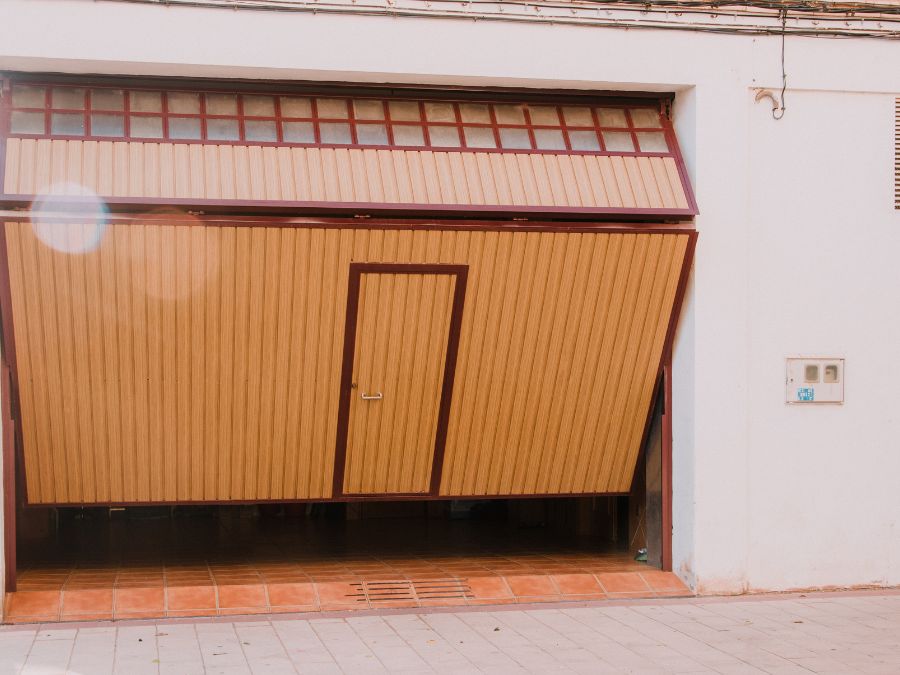What Type of Garage Door Should You Buy?
Some homeowners focus on making a grand spectacle with their front entry doors, as the entrance way is an important part of curb appeal. However, slowly over the last several decades, choosing a garage door has become just as important for your residence, if not more so. Why? Unlike trends from 50 years ago, most homes now have attached garages that are part of a home’s overall footprint. Even if your garage door is on the side of your residence or detached nearby, it’s often one of the first elements about your home that people notice. As the most cost-efficient home improvement project you can undertake, learning about the types of garage doors is more than important.
Garage doors are an integral part of a home, offering not only security but also contributing to your home’s aesthetic appeal.
However, not all garage doors are created equal. Choosing the wrong type can result in safety issues, increased maintenance costs, and an incompatible look with the rest of your property. Understanding the various types of garage doors can help you make an informed decision that complements both your practical needs and design preferences.
Here’s everything you need to know about the different garage door types.
Types of Garage Doors
- Sectional Garage Doors
Sectional garage doors are the most widely used doors in the U.S. They are comprised of several horizontal panels or sections that are hinged together, allowing the door to operate smoothly. They are designed to move vertically along tracks and then curve into a horizontal position overhead, which makes them a popular choice for many homeowners. These doors can be made from various materials, including steel, aluminum, wood and fiberglass and are available in numerous colors, finishes and styles.

Pros:
- Space-saving – Sectional garage doors are an excellent choice for homeowners with limited driveway space, as they open vertically without swinging outwards. This feature allows you to park your vehicle close to the door without obstructing its operation.
- Energy-efficient – Many sectional doors are well insulated, which helps with energy efficiency, especially for attached garages.
- Easy to automate – They’re simple to operate manually, but also compatible with most garage door openers, making automation straightforward.
- Security – These garage doors are known for their sturdy construction and secure locking systems, which provides a high level of security against intruders.
Cons:
- Higher cost – While not the most expensive option, sectional doors can cost more than some other garage doors. The cost will vary depending on the materials used, size and additional features such as insulation and custom finishes.
- Takes up ceiling space – The tracks take up space along the ceiling, which can be a concern if you use your garage for overhead storage.
- Panel may need repairs – While the design is durable, individual panels can be damaged and may need occasional repair or replacement.
- Noise level – The noise they produce when operating can be off-putting.
Cost and Maintenance Considerations for Sectional Garage Doors
The cost to have a sectional garage door installed can vary between $750 and $2,500 depending on where you live and the material chosen.
Maintenance of a sectional door should be done twice a year and should include checking items such as:
- Any unusual noise when the door is in motion
- Testing the reversal action
- Check that all bolts and brackets are tight
- Inspect all rollers for free movement
- Check for signs of damage
- Roll-Up Garage Doors
Roll-up garage doors are usually found in commercial environments, and as the name suggests, when it is opened, the door winds up in a roll at the top of the door opening.

Pros:
- Extremely durable – Roll-up doors are built to withstand heavy and harsh conditions, making them one of the most robust options available.
- Minimal space requirements – Due to the design, roll-up garage doors do not require additional space on either side of the door, as they do not swing upwards like other door types. This makes them an ideal choice for homes with limited space or narrow driveways.
Cons:
- Limited design options – Roll-up doors usually have an industrial look with fewer customization choices than other types.
- Higher cost – These doors are usually more expensive than other door options, both in terms of purchase and installation.
- They can be noisy – Without proper installation, roll-up doors can be noisier when opening and closing, which might be an issue in residential settings.
- Professional installation – They cannot be installed by a DIY enthusiast.
Cost Maintenance Considerations for Roll-Up Garage Doors
You can expect to pay anywhere between $900 and $3,500 for a roll-up door and installation.
Maintenance of a roll-up garage door should be performed carefully, not only because of the weight of the door, but also because all the moving parts work in conjunction with each other ensuring smooth operation. You should regularly inspect items including:
- All the fasteners and brackets
- The door guides
- The fascia and hood
- The motor and drive chain
- The inertia safety brake
Also be sure to lubricate all moving parts.
- Side-Hinged Garage Doors
Reminiscent of barn doors, side-hinged garage doors open and close by swinging outwards from the garage opening and are secured to a frame by hinges. Unlike other types of garage doors, they don’t retract or tilt. Side-hinged garage doors are available in many styles and designs, ranging from classic to contemporary.

Pros:
- Classic, timeless design – These doors have a simple traditional appearance that fits well with older or period-style properties.
- Easy maintenance and use – With fewer moving parts than other garage doors, side-hinged doors are straightforward to maintain and can be opened manually with little effort (they can also be automated).
- No ceiling space needed – Since they swing outward, the doors do not need space inside the garage’s ceiling, giving you full overhead storage.
Cons:
- Needs space in front – Because they swing outward, you’ll have a lot less room in front of the garage. This can be a challenge for homes with short driveways or tight spaces.
- Not ideal for automation – While it’s possible to automate side-hinged doors, the process requires additional modifications, which can be expensive.
- Less security – Side-hinged garage doors may not provide the same level of security as other types of garage doors, such as sectional or roll-up doors. The design of the locking system and the materials used can impact the door’s overall security, so it’s important to consider these factors when choosing a side-hinged garage door for your home.
Cost and Maintenance Considerations for a Side-Hinged Garage Door
Depending on the material, size and installation costs, the average price for side-hinged garage doors can be between $500 and $2,000.
If you’re looking for a unique or custom-made set of side-hinged doors, costs can shoot up, especially for high-quality wood options.
Maintenance considerations for side-hinged garage doors are probably the simplest of all the types of garage doors. Hinges and locks should be periodically inspected for any wear and tear and lubricated at least twice a year to keep them in good working order.
- Sliding garage doors
Sliding garage doors are doors that hang from a heavy gauge solid track that is mounted above or inside the garage door opening. They can be either two doors that slide apart from each other or one single door that slides to one side of the opening. These doors can be made from various materials, including wood, steel, aluminum and glass. Sliding garage doors can be designed as a single large panel or multiple smaller panels, depending on the desired aesthetic and functional needs.

Pros:
- Space saving – Sliding garage doors do not swing outward, nor do they require space inside the garage, making them an excellent choice for homes with limited space. They can also be suitable for garages with a low ceiling, where other types of doors might not be feasible.
- Versatile design options – Sliding garage doors come with a wide range of style and materials, allowing for a high degree of customization. This versatility makes it easy to find sliding garage doors that complement your home’s architecture and design aesthetic.
Cons:
- Complex installation – The installation of sliding garage doors can be more complicated than other types of garage doors due to the track and roller system. This typically requires professional installation, which can result in higher initial costs.
- Maintenance – Sliding garage doors require regular maintenance to ensure smooth operation, including cleaning and lubrication of the tracks and rollers. Additionally, any debris or obstructions in the tracks can impact the door’s performance, making it essential to keep the tracks clean and clear.
Cost and Maintenance Considerations for Sliding Garage Doors
Prices for sliding garage doors range from $750 to $2,000 for a single door and from $1,500 to $4,000 for a double garage door with installation costs ranging from $450 to $1,000.
Maintenance items include paying attention to the tracks, rollers, brackets, and fasteners, making sure they are all secure and lubricated where appropriate.
- Slide-To-The-Side Doors
Slide-to-the-side garage doors operate on a lower track, moving horizontally along the wall of the garage. When open, the door sits parallel to the garage wall, making it a great option for homes where ceiling space is limited.

Pros:
- Space-saving design – These doors don’t take up ceiling space, making them ideal for garages with low ceilings or overhead storage.
- Maximum space – They provide maximum space in the garage by sliding along the wall.
- Heightened security – There is heightened security with slide-to-the-side doors due to the construction of steel frames, corners that are reinforced, and security locks.
Cons:
- Limits sidewall use – You’ll need a clear, unobstructed wall along the side of your garage for the door to slide open, which can limit storage space or other uses.
- Expensive – Slide-to-the-side doors tend to be more expensive than most other options due to their unique design and installation requirements.
- Fewer design options – While functional, they tend to have an industrial appearance detracting from overall aesthetic and curb appeal.
Cost and Maintenance Considerations for Slide-To-The-Side Garage Doors
Because slide-to-the-side garage doors are not widely used, prices are higher than normal and can range from $1,500 to $4,000 depending on material and design.
Slide-to-the-side garage doors require very little maintenance compared to others because of the low number of moving components.
- Tilt-Up or Up-And-Over Canopy Garage Doors
Tilt-up or up-and-over canopy doors are similar to sectional doors, except for one crucial difference. They are “one piece” doors and instead of rolling up on tracks, this type of door tilts up and back along the track at the ceiling level.
When the door is open, a portion remains outside the garage creating a “canopy” effect. The door tilts up as a single piece, but doesn’t fully retract into the ceiling.

Pros:
- Cost-effective – Tilt-up garage doors are generally more affordable compared to other garage door types. Their simple design and construction make them a budget-friendly option for many homeowners.
- Easy to install – With fewer moving parts and a simple mechanism, installation tends to be quicker and less costly.
- Canopy feature – When open, the door creates a small overhang or “shelter” outside the garage, which can be useful in light rain or bright sun.
Cons:
- Less secure – These doors are less secure than the popular sectional doors since there is no bottom seal to the door, making it easy to force the door up.
- Hard to repair – If the door suffers any damage, then the whole door may need to be replaced, unlike a sectional door where just the damaged section is replaced.
- Limited to single car garages – These doors typically aren’t available for larger double car garages, so they’re only an option for smaller setups.
Cost and Maintenance Considerations for Tilt-Up or Up-And-Over Canopy Garage Doors
The average price for tilt-up/canopy garage doors can range from $500 to $1,500. Size, installation, and materials chosen will affect the overall costs.
Because the mechanism that is built into this type of door is a basic hinge that allows the door to pivot upwards, the maintenance required is fairly basic. Checking the pivot point periodically and lubricating them is almost all that is required on a monthly basis.
- Tilt-Up or Up-And-Over Retractable Garage Doors
Unlike tilt-up-and-over canopy doors (where approximately one-third of the door protrudes out of the top of the opening) retractable tilt-up doors move all the way into the garage.

Pros:
- Clean, minimalistic look – These doors offer a sleek, simple appearance that can complement modern homes.
- Great for open garage spaces – Since the whole door retracts into the ceiling, they’re best if you want a clear unobstructed ceiling when the door is open.
- Unobstructed view – Once fully retracted, the door is completely hidden, giving a clean unobstructed view of your driveway and garage.
Cons:
- They need space to open – Tilt-up doors swing outward before retracting, so they require more room in front of the garage. If you park too close, you’ll be in the way.
- Higher repair costs – Because the construction is more intricate than other door types, the possibility of mechanical failures is higher, thus increasing the risk of costly repairs.
- They can be noisy – These doors tend to be louder than other types, especially during opening and closing.
Cost and Maintenance Considerations for Tilt-Up or Up-And-Over Retractable Garage Doors
Costs for this type of garage door range from $700 to $2,500 depending on dimensions and materials.
To keep your tilt-up retractable garage door working in good order, you should clean the door monthly, lubricate tracks and hinges every three months, and have it professionally serviced annually.
Which Garage Door Is Right for You?
Choosing the right garage door depends on various factors, such as your budget, personal preferences and the specific needs of your garage. Here are some points to consider when making a decision.
Aesthetic: Think about the overall style and appearance of your home. Choose a garage door that complements the architectural design and enhances the curb appeal.
Space: Consider the amount of space you have available in your driveway, ceiling and surrounding area. Some garage doors require more clearance than others, so ensure you have enough space for the chosen type of door.
Insulation: If energy efficiency is a priority, select a garage door with good insulation properties. This will help regulate temperature, reduce energy consumption, and potentially lower your utility bills.
Security: Evaluate the level of security provided by different garage door types. Look for durable materials, strong locking mechanisms, and additional security features like motion sensors or rolling code technology.
Budget: Set a budget for your garage door project and explore the various options available within your price range. Remember to consider long-term costs, such as maintenance and potential repairs.
Convenience: Think about the level of convenience you desire. Types of garage doors that offer motorized operation or remote-control access provide added convenience for everyday use.
Consulting with a professional garage door installer can also help you make an informed decision by considering your specific requirements and recommending the most suitable option.






